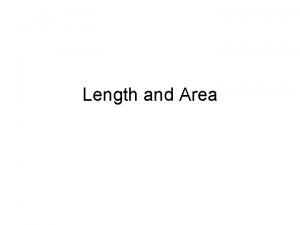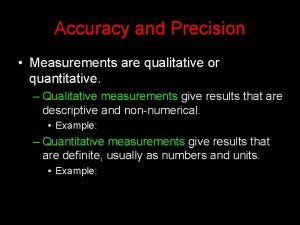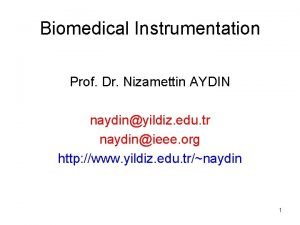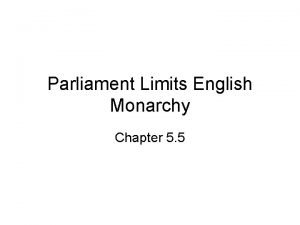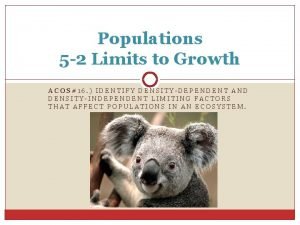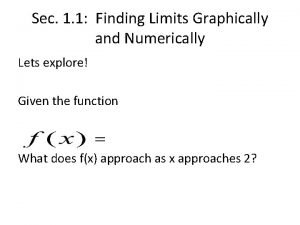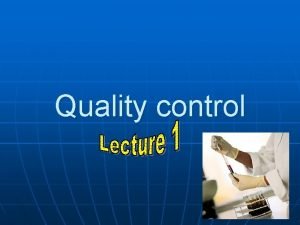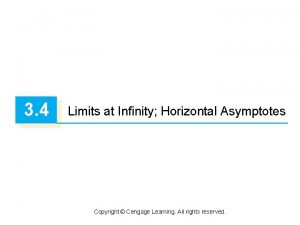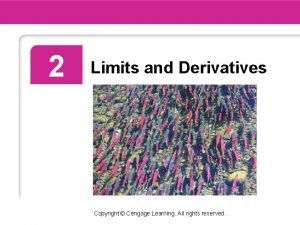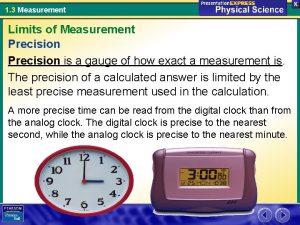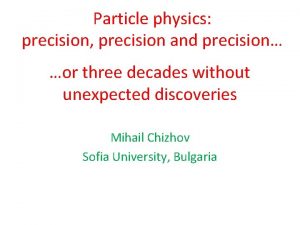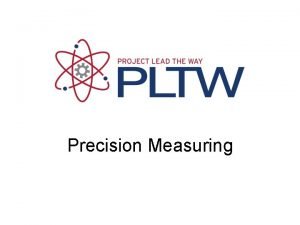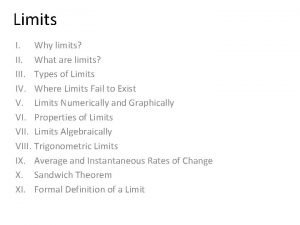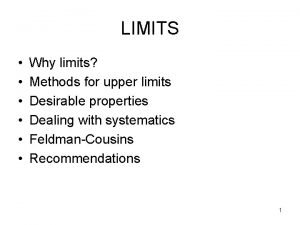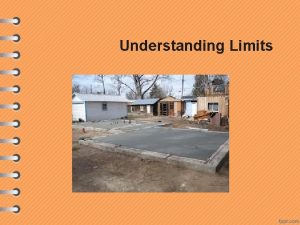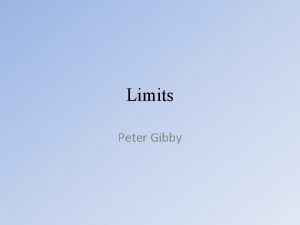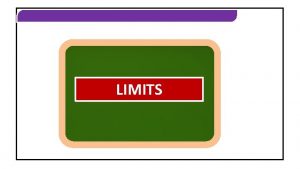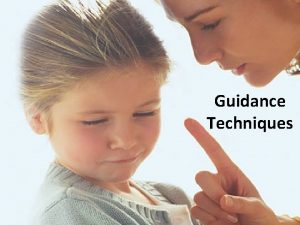1 3 Measurement Limits of Measurement Precision is

















- Slides: 17

1. 3 Measurement Limits of Measurement Precision is a gauge of how exact a measurement is. Significant figures are all the digits that are known in a measurement, plus the last digit that is estimated.

1. 3 Measurement Limits of Measurement A more precise time can be read from the digital clock than can be read from the analog clock. The digital clock is precise to the nearest second, while the analog clock is precise to the nearest minute.

1. 3 Measurement Limits of Measurement If the least precise measurement in a calculation has three significant figures, then the calculated answer can have at most three significant figures. • Mass = 34. 73 grams • Volume = 4. 42 cubic centimeters. • Rounding to three significant figures, the density is 7. 86 grams per cubic centimeter.

1. 3 Measurement Limits of Measurement Accuracy Another important quality in a measurement is its accuracy. Accuracy is the closeness of a measurement to the actual value of what is being measured. For example, suppose a digital clock is running 15 minutes slow. Although the clock would remain precise to the nearest second, the time displayed would not be accurate.

1. 3 Measurement Measuring Temperature Celsius (centigrade) temperature scale Fahrenheit scale Capillary tube Colored liquid The liquid moves up and down the capillary tube as the temperature changes. Bulb The bulb contains the reservoir of liquid. Scale The scale indicates the temperature according to how far up or down the capillary tube the liquid has moved.

1. 3 Measurement Measuring Temperature Compressed scale Liquid rises less in a wide tube for the same temperature change. Liquid rises more in a narrow tube for the same temperature change. Expanded, easy-to-read scale

1. 3 Measurement Measuring Temperature The two temperature scales that you are probably most familiar with are the Fahrenheit scale and the Celsius scale. • A degree Celsius is almost twice as large as a degree Fahrenheit. • You can convert from one scale to the other by using one of the following formulas.

1. 3 Measurement Measuring Temperature The SI base unit for temperature is the kelvin (K). • A temperature of 0 K, or 0 kelvin, refers to the lowest possible temperature that can be reached. • In degrees Celsius, this temperature is – 273. 15°C. To convert between kelvins and degrees Celsius, use the formula:

1. 3 Measurement Measuring Temperatures can be expressed in degrees Fahrenheit, degrees Celsius, or kelvins.

1. 3 Measurement Assessment Questions 1. A shopping mall has a length of 200 meters and a width of 75 meters. What is the area of the mall, in scientific notation? a. b. c. d. 1 × 103 m 2 1. 5 × 104 m 2 1. 75 × 104 m 2

1. 3 Measurement Assessment Questions 1. A shopping mall has a length of 200 meters and a width of 75 meters. What is the area of the mall, in scientific notation? a. b. c. d. 1 × 103 m 2 1. 5 × 104 m 2 1. 75 × 104 m 2 ANS: C

1. 3 Measurement Assessment Questions 2. A student measures the volume and mass of a liquid. The volume is 50. 0 m. L and the mass is 78. 43 g. What is the correct calculated value of the liquid’s density? (A calculator reads 1. 5686. ) a. b. c. d. 1. 6 g/cm 3 1. 57 g/cm 3 1. 569 g/cm 3 1. 5686 g/cm 3

1. 3 Measurement Assessment Questions 2. A student measures the volume and mass of a liquid. The volume is 50. 0 m. L and the mass is 78. 43 g. What is the correct calculated value of the liquid’s density? (A calculator reads 1. 5686. ) a. b. c. d. 1. 6 g/cm 3 1. 57 g/cm 3 1. 569 g/cm 3 1. 5686 g/cm 3 ANS: B

1. 3 Measurement Assessment Questions 3. How can you convert a temperature expressed in kelvin (K) to degree Celsius (°C)? a. b. c. d. add 32 subtract 32 add 273 subtract 273

1. 3 Measurement Assessment Questions 3. How can you convert a temperature expressed in kelvin (K) to degree Celsius (°C)? a. b. c. d. add 32 subtract 32 add 273 subtract 273 ANS: C

1. 3 Measurement Assessment Questions 1. The SI base unit for length is the mile. True False

1. 3 Measurement Assessment Questions 1. The SI base unit for length is the mile. True False ANS: F, meter
 Horizontal
Horizontal Real limits
Real limits Semi precision attachment abutment
Semi precision attachment abutment Single precision vs double precision
Single precision vs double precision Precision and non precision instruments
Precision and non precision instruments Limits of measurement
Limits of measurement Is accuracy qualitative
Is accuracy qualitative Windows 2019 essentials limits
Windows 2019 essentials limits Nfpa 99 leakage current limits
Nfpa 99 leakage current limits Limits of two variable functions
Limits of two variable functions Parliament limits the english monarchy
Parliament limits the english monarchy Limiting factor definition
Limiting factor definition Finding limits graphically and numerically
Finding limits graphically and numerically Consistency index
Consistency index Usp weight variation limits
Usp weight variation limits Horizontal asymptote rules
Horizontal asymptote rules Limits and derivatives
Limits and derivatives Famous limits
Famous limits





